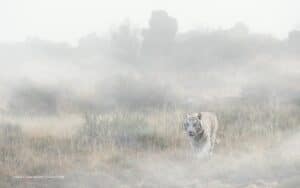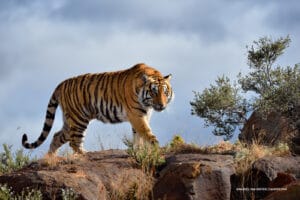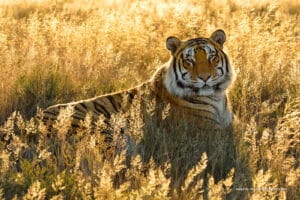We sat down recently with award-winning professional wildlife photographer and co-owner of Squiver (which offers world-renowned photographic safaris), Marsel van Oosten, to learn more about his experience of photographing tigers in the Karoo at Tiger Canyon, as well as some tips on wildlife photography from the field. Marsel has won numerous prestigious awards, including Wildlife Photographer of the Year, and is a regular contributor to National Geographic.

How has your experience been photographing tigers at Tiger Canyon?
Tiger Canyon is not like most wildlife destinations – it’s small scale with only a few vehicles, so most of the time it’s just you and the wildlife. The biggest difference though is productivity. There are many tigers and you will at least see one on every drive, and when you see one, it’s often in a very photogenic spot. I have been to India several years ago to photograph tigers on an assignment for National Geographic Traveler. It was extremely hard to find the tigers, the habitat is often so dense that you don’t get a good view, and there was a ton of people driving all over the place creating traffic jams inside the parks. A horrible experience. One day in Tiger Canyon will give you more, and likely better shots than a week in any of the typical tiger parks.
I’ve been to Tiger Canyon more times than I can count, and every single time it has been amazing – there’s a reason why I keep coming back! Not only is the wildlife viewing extraordinary, the landscape is spectacular, and the guides are super friendly and knowledgeable. What keeps surprising me is how different each visit is. Last year there were suddenly four tigers with litters, giving us 12 tiger cubs to photograph! I also really like that I actually know and recognize the different tigers and can see how they’re growing up, and learning about their different characters.

Are there any tigers in particular you enjoy photographing the most, and why?
Yes, that would be Ussuri. She’s a beautiful tigress, very relaxed, and a phenomenal mother. As a result, her cubs were also very relaxed with human presence very quickly – great for photography!
Do you have any photographic tips for future photographers visiting Tiger Canyon?
Don’t go for just one day. Tiger Canyon is pretty big with lots of difficult terrain, and you need some time to scout all the areas thoroughly. They built a beautiful lodge right at the edge of the canyon that has spectacular views and is right at the edge of the park – very convenient. And don’t forget to bring wide angle lenses or short zooms, because the tigers sometimes come very close and you can get amazing shots when they do. Also, try shooting with backlight around sunrise and sunset, because the sun will turn the tall grass into gold.

Do you have any key tips for photographing wildlife in general?
Make sure to watch your backgrounds, those are often just as important as your main subject. And don’t shoot everything with the longest lens you have. It’s nice a have a few tight portraits, but the wider shots that include some of the habitat will always be more interesting to look at.
